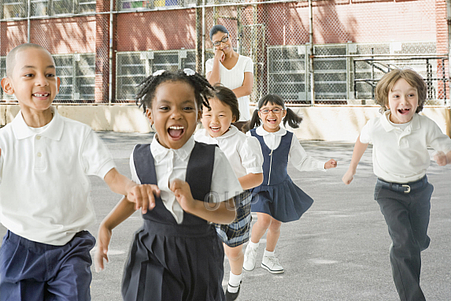
As part of a recent talk to teachers of young learners in Taiwan I asked participants to complete the following sentence: ‘Children are…’ The idea was to identify some natural characteristics of children which we might consider to bring out the best in students. My overall goal was to explore ideas around the topic of making teaching more real and relevant.
So, what would you have written had you been there? ‘Children are…’
In Taiwan the most popular answers were ‘energetic’, ‘curious’, ‘creative’, ‘friendly’ and ‘playful’. To be totally honest, there was also a smattering of ‘cute’, ‘lovely’, ‘naughty’ and ‘monsters’ but I think that’s the subject of another post.
So does this help us at all? Does the best language teaching take into account the nature of children? Do good lessons for young learners mirror these characteristics?
Good language teachers certainly harness children’s boundless energy by including plenty of movement and action through songs, TPR activities, games and role plays. They also build connections to the wider world and to school subjects, thereby satisfying children’s natural curiosity. Their lessons are full of surprise and wonder. It’s not just about English but ways to use English. Good teachers allow space for creativity, giving students plenty of chance to contribute in a personalised way. They build a community in and beyond the classroom that nurtures children’s friendly nature and they build a supportive environment for learning. This can be done through stories and a values program that models the thoughtful behaviour we seek. Finally, the best teachers allow for playfulness, both for the sake of fun but also because they understand that that’s the best way for children to learn about the world around them.
In nature, most things that are fun are fun for a very good reason.
When I looked again at these lists of adjectives something else struck me. The characteristics of children are also the characteristics of good language teachers. Think of some language teachers you really admire. Are they energetic? Curious? Creative and friendly? Playful? I thought so! And while we’re at it, wouldn’t the list be good advice for anyone who wants to be a successful language learner?
As with most things, we are best to look for our inspiration right in front of us and, as is usually the case, one’s best ideas are old news. Here are two quotes from educational pioneer Maria Montessori, written over 100 years ago.
- “The school must permit the free natural manifestations of the child.”
- “From the child itself the teacher will learn how to perfect himself as an educator.”
Not surprising really that there are so many Montessori schools called ‘Follow the Child’. It’s something we would all be well to remember.
This all brings us back to the fact that children are built to learn. For better or for worse, that’s how humans managed to dominate the planet. The best ‘methods’ take into account the simple fact that children already possess the right instincts to be wonderful learners. More than with any other age group the art of teaching young learners is to work in harmony with those instincts.